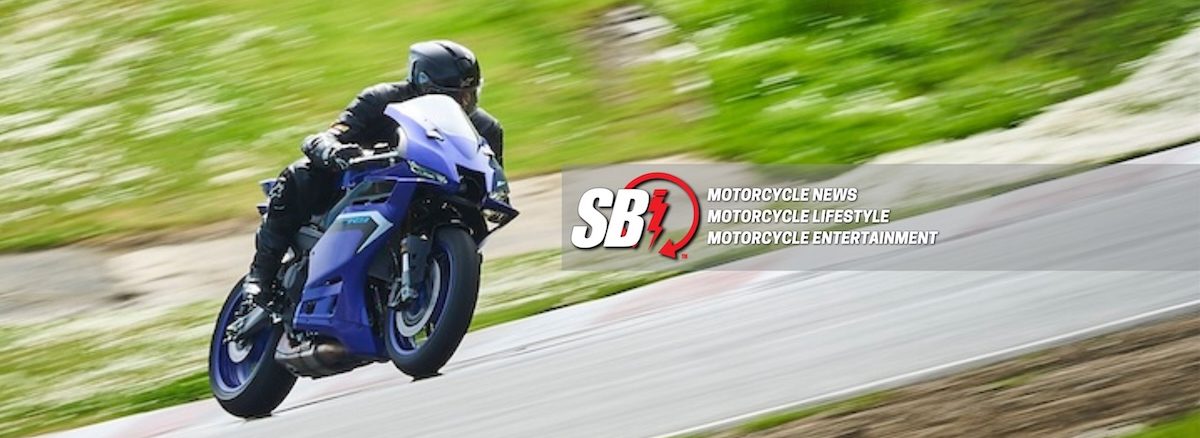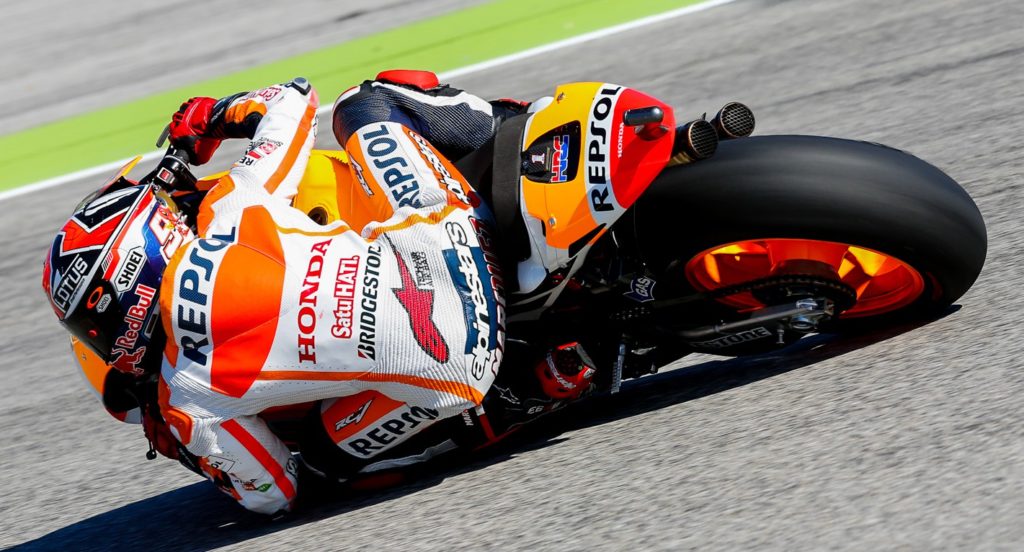One of the common questions that we get frequently at the Penguin School is from riders asking us how far they should get off the bike. To answer this question, it is important to first consider what we are trying to accomplish by getting off the bike. As with most concepts relating to riding a motorcycle, once we understand the “why” we do what we do, the “what” to do becomes a lot more clear. There is a delicate balance in hanging off that needs to be stuck between helping the bike turn, creating rider feel, and maintaining control.
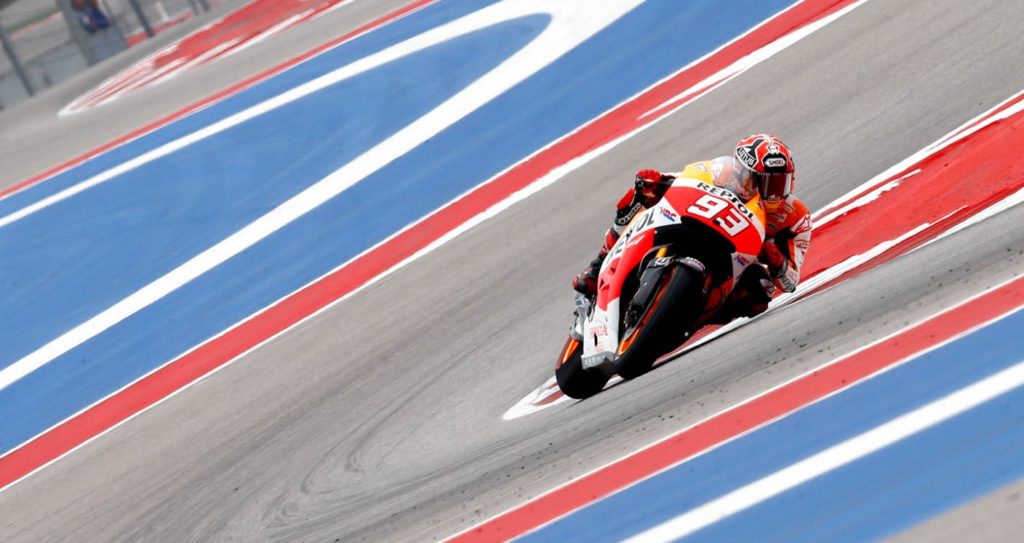
Hanging off the motorcycle properly is something that is talked about all the time, but very few riders arrive at the racetrack with good form (I can certainly count myself in that category). Changing the way that riders support their weight on the bike mid-corner is a challenge. Once riders form habits over thousands of miles of riding, it often takes a concerted effort to establish a new pattern of movements and commit them to muscle memory. However, I can unequivocally state that for a majority of riders getting off the bike more will make a real, tangible improvement in the handling of their motorcycle and the ability to feel feedback from the tires (as long as they continue to use their legs to keep weight off their hands).
For this discussion, we will focus on the basics of hanging off through a long, constant radius corner. There are countless adjustments that riders make as they brake and as they accelerate out of the corner, but we have found that the best place to start is to focus on mid-corner form. The goal through most long corners is to simply do all that you can to help the bike turn. With this in mind, we will start with a basic physics lesson.
For a motorcycle to turn, it has to lean. Anytime a rider is traveling in an arc, there is an acceleration force (MV2/R) that is trying to push the bike to the outside. In that formula M=mass, V=velocity, and R=radius of the corner. The faster the rider goes, or the tighter the corner at a given speed, the greater that force is. The force that balances the acceleration is the force of gravity, which always acts straight down. The more the bike is leaned over, the more leverage gravity itself (g) has on the center of gravity. This concept is illustrated in Diagram A.
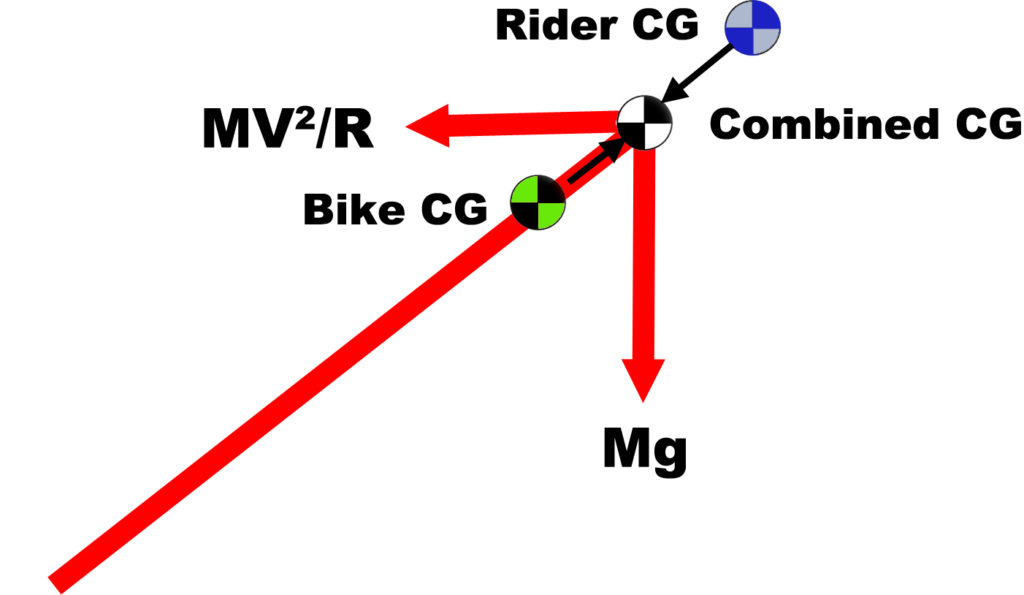
The important part for us know is that this acceleration force works through the combined center of gravity of the rider (shown as a silver and blue disk) and the bike (shown as a green and black disk). The combined center of gravity is the white and black disk. The most basic reason for getting off the motorcycle is that we want to help the motorcycle turn. If we lower the center of gravity of the rider without changing the lean angle of the bike, then the center of gravity moves lower and the bike will either (1) carve a tighter arc at the same speed or (2) allow the rider to go faster on the same arc, both of which are great options to have!
In Photo 1, we used Photoshop to move Eric Bostrom to a centered position on the motorcycle and overlaid the free body diagram showing the forces on the center of gravity (CG). In Photo 2, we moved him back to his actual position and showed what it did to the combined CG. We left a ghosted image of the red line leading to the old CG to illustrate the difference that this motion makes.
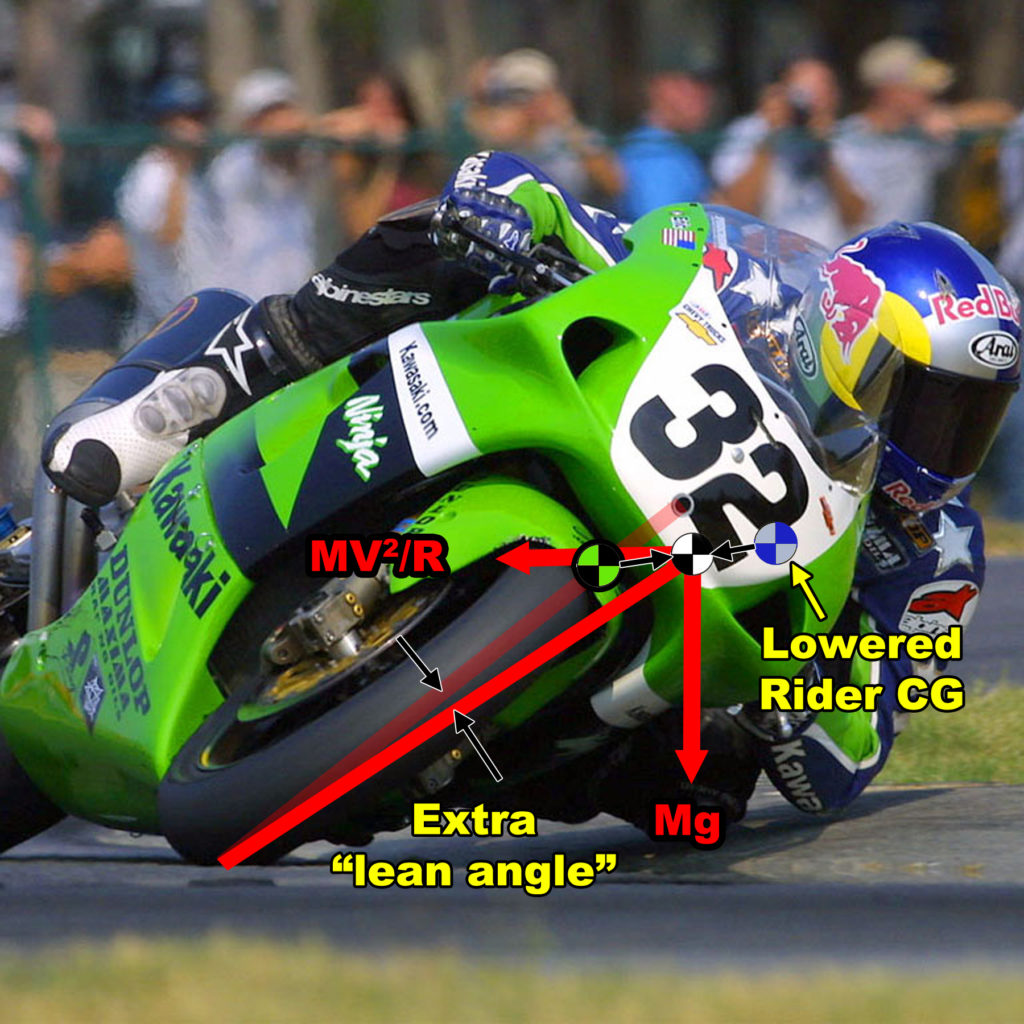
Photo 1 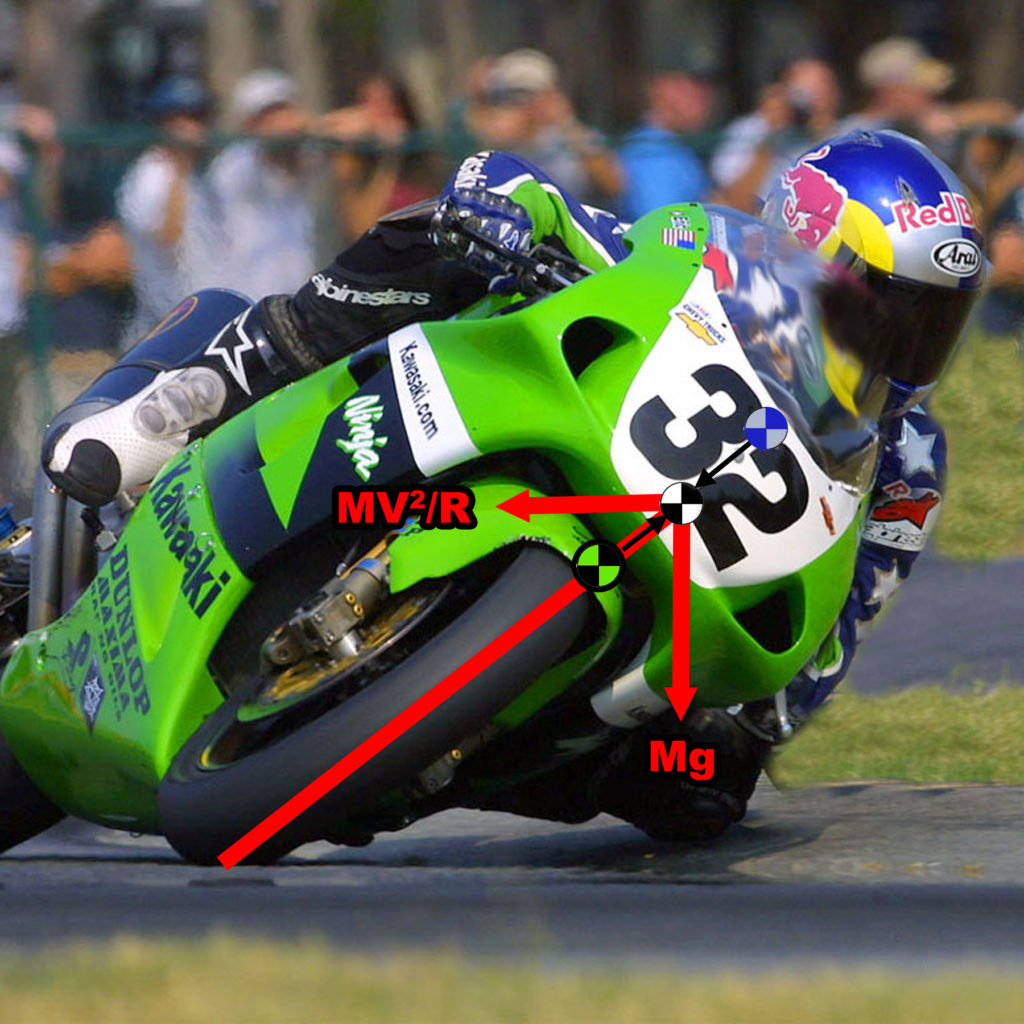
Photo 2
With this said, it seems like the more a rider gets off the bike the better. However, two important factors establish a limit to how far a rider can get off the bike, and the first one is rider feel. We have had several articles in the past that detail the techniques and importance of completely supporting your body weight with your legs to maximize traction and feel. Any weight on the bars at full lean is too much, and takes away from your ability to sense how much traction you have available! When riders get way off the bike, they often get so far away from the motorcycle that it is very difficult to leave weight off of their hands. This is a clear signal that it is time to come back towards the center.
Perhaps the most important factor when determining how far to get off the bike is the ability to control the motorcycle. The most critical element to control is the ability to have the bike move independently of the rider. At the Penguin School, we often use the phrase “Ride like part of the suspension, not like part of the frame.” The moment one of your arms reaches the limit of its travel (and becomes straight), any additional motion drags your entire body along with it. At this point, you have officially lost control and now are relying on luck to stay on the motorcycle.
The best way we have found to get riders to understand how far they should get off the bike is to perform a simple test in the paddock. With the help of other people supporting the bike while on a rear stand, we have riders experiment with getting further and further off the bike, all the while testing to see if they can move the bars lock to lock. As soon as they get to the point that this exercise straightens their arms, they have reached their limit for hanging off. This limit is different for every rider. The ability to turn the bars all the way in both directions indicates that a rider has the greatest likelihood to be able to deal with an unexpected loss of traction. Next time before you ride, try this test in the paddock and then try to replicate your “ideal hang” on the track… it will pay dividends every time!
Until next time – ride fast, ride safe!
About The Author
Discover more from SportBikes Inc Magazine
Subscribe to get the latest posts sent to your email.
